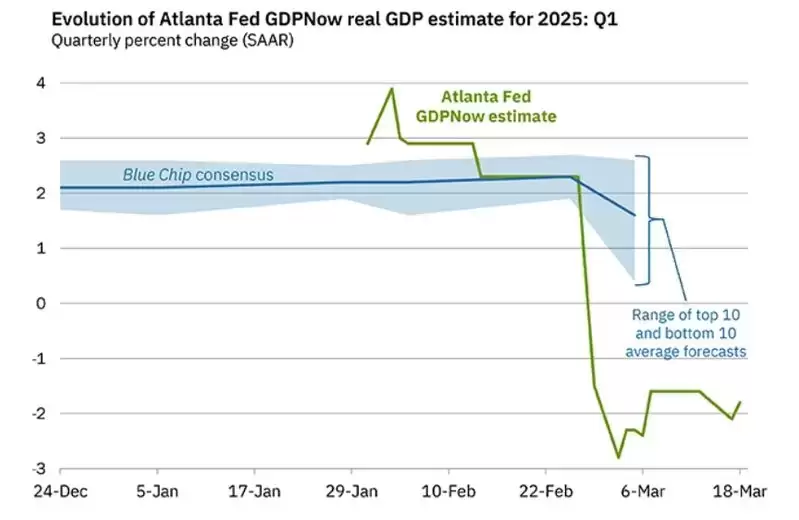 |
|
 |
|
 |
|
 |
|
 |
|
 |
|
 |
|
 |
|
 |
|
 |
|
 |
|
 |
|
 |
|
 |
|
 |
|
The cryptocurrency market took a brutal nosedive in the last 24 hours, leaving investors reeling as Bitcoin and major altcoins tumbled amid widespread panic.

The cryptocurrency market took a brutal nosedive in the last 24 hours, wiping out $1.7 billion in leveraged positions and leaving investors reeling as Bitcoin and major altcoins tumbled amid widespread panic.
As of 1:40 PM PDT on March 10, 2025, the crypto landscape was in chaos, with prices dropping sharply due to a perfect storm of regulatory fears, macroeconomic shifts, and market sentiment shifts. Here’s a deeper look at the real facts, figures, and what’s driving this gut-wrenching crash.
Altcoins weren’t immune to the carnage. Ethereum (ETH) dropped 12% to $3,200, losing $50 billion in market cap. Solana (SOL) plummeted 18% to $145, XRP fell 14% to $0.58, and Dogecoin (DOGE) crashed 20% to $0.18, according to CoinGecko data at 1:40 PM PDT on March 10.
The broader altcoin market shed $300 billion, pushing the total crypto market cap below $2.5 trillion—down from $2.8 trillion on March 9.
DeFi tokens like Uniswap (UNI) and Aave (AAVE) saw even sharper declines, dropping 22% and 19%, respectively, as liquidity dried up. Stablecoins like USDT and USDC briefly de-pegged, with USDT trading at $0.98 for an hour amid fears of reserve scrutiny.
The sell-off also rippled through NFT marketplaces, with OpenSea reporting a 30% drop in trading volume to $50 million in the last 24 hours, according to DappRadar.
One of the primary catalysts for the recent market downturn was a significant security breach. North Korean hackers, known as the Lazarus Group, executed the largest crypto heist to date, stealing $1.5 billion from Bybit, a Dubai-based cryptocurrency exchange.
This audacious heist not only shook the confidence of Bybit's users but also sent shockwaves throughout the entire cryptocurrency market.
The breach was discovered when Bybit's CEO, Ben Zhou, noticed an unauthorized transfer of 400,000 Ethereum (approximately $1.5 billion) from a cold wallet. This alarming discovery led to an emergency crisis plan, with the exchange receiving over 200,000 withdrawal requests within an hour. The situation was stabilized with assistance from other crypto firms, but the damage to investor confidence was already done.
In addition to security concerns, governmental actions have also played a role in the recent market turbulence. David Sacks, appointed as the “crypto czar” by President Donald Trump, revealed that the U.S. government may have lost over $16 billion by prematurely selling off half of its bitcoin holdings.
This revelation has raised questions about the government’s strategy and its impact on the crypto market.
In response to these losses, President Trump signed an executive order to create a “Strategic Bitcoin Reserve” and a “Digital Asset Stockpile.” This initiative aims to prevent similar losses by securely storing remaining bitcoins and including a variety of cryptocurrencies in the stockpile.
While this move is intended to stabilize the market, it has also introduced uncertainty, as investors speculate about the government’s future involvement in the crypto space.
The collapse of major crypto entities often leads to a domino effect, impacting other platforms and investors. The recent Bybit hack has heightened concerns about the security of other exchanges, leading to increased withdrawals and a general sense of unease among investors.
This phenomenon, known as contagion, can exacerbate market downturns as fear spreads throughout the ecosystem. For instance, the collapse of FTX in 2022 had far-reaching consequences, affecting exchanges, lenders, and ultimately, retail investors. Similarly, the current crisis has led to heightened scrutiny of other platforms, with investors questioning the security measures in place to protect their assets.
Another critical factor contributing to the recent market crash is the liquidation of leveraged positions. Leveraged trading allows investors to borrow funds to increase their exposure to the market, amplifying both potential gains and losses.
In this instance, the sharp decline in cryptocurrency prices triggered liquidations totaling approximately $1.7 billion within a 24-hour period. These liquidations further intensified the selling pressure, leading to a self-reinforcing cycle of declining prices and additional liquidations.
The high level of leverage in the market made it particularly susceptible to such rapid downturns, highlighting the risks associated with leveraged trading in volatile markets.
Investor sentiment plays a crucial role in the cryptocurrency market. The recent events, including the government's involvement and the Bybit hack, led to a decline in confidence, prompting many to liquidate their holdings.
This mass sell-off contributed to the sharp
Disclaimer:info@kdj.com
The information provided is not trading advice. kdj.com does not assume any responsibility for any investments made based on the information provided in this article. Cryptocurrencies are highly volatile and it is highly recommended that you invest with caution after thorough research!
If you believe that the content used on this website infringes your copyright, please contact us immediately (info@kdj.com) and we will delete it promptly.


























































